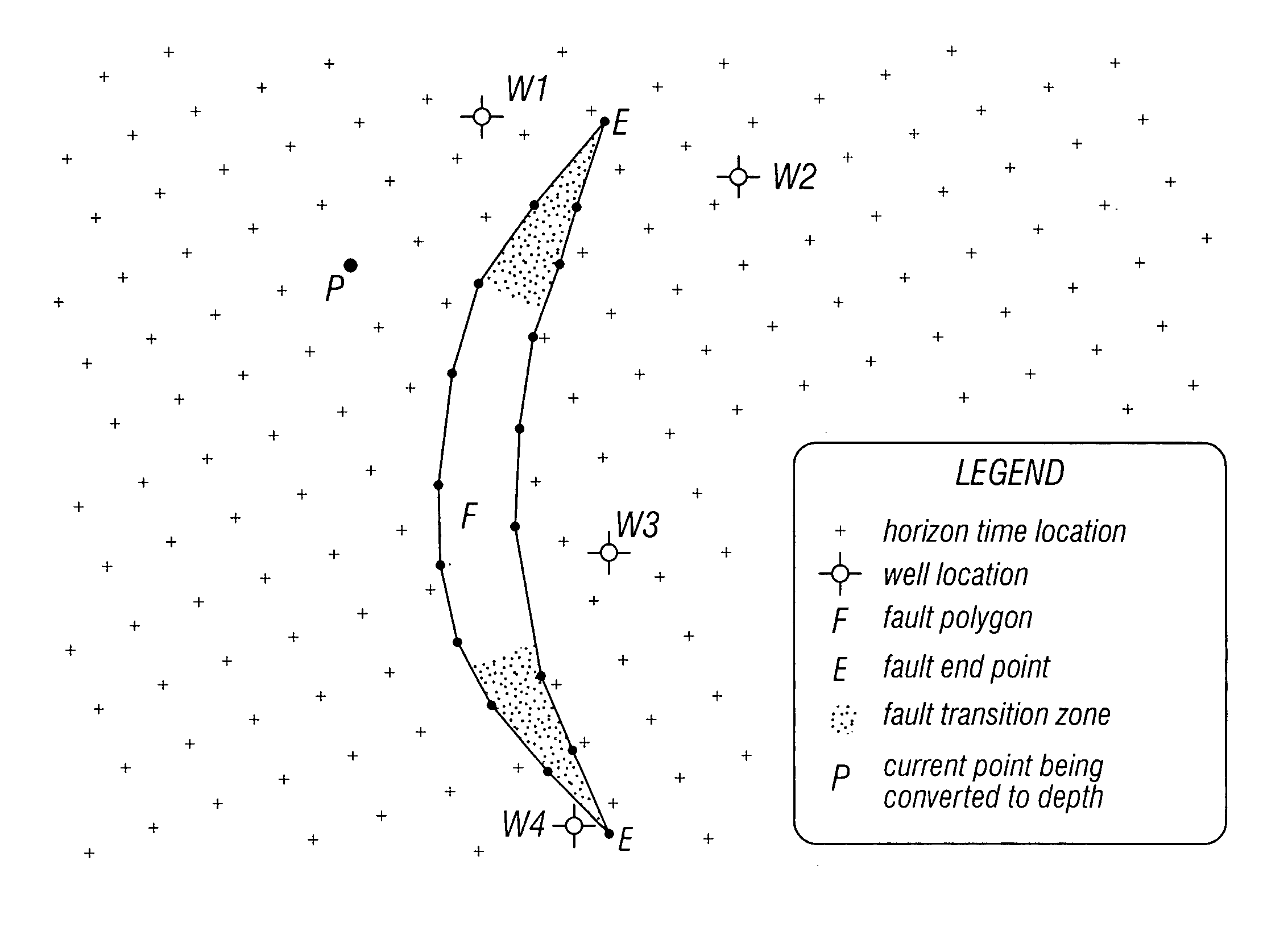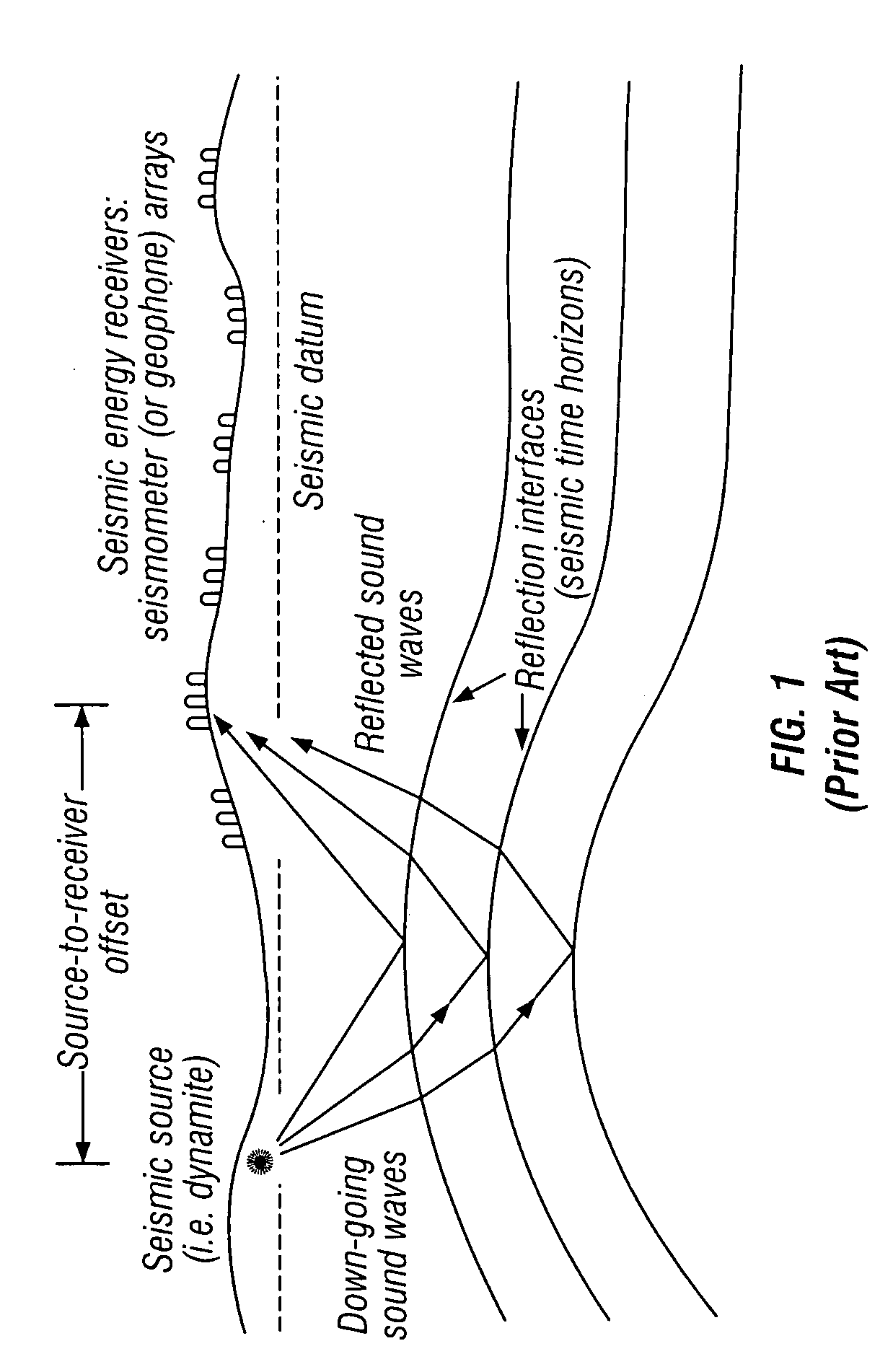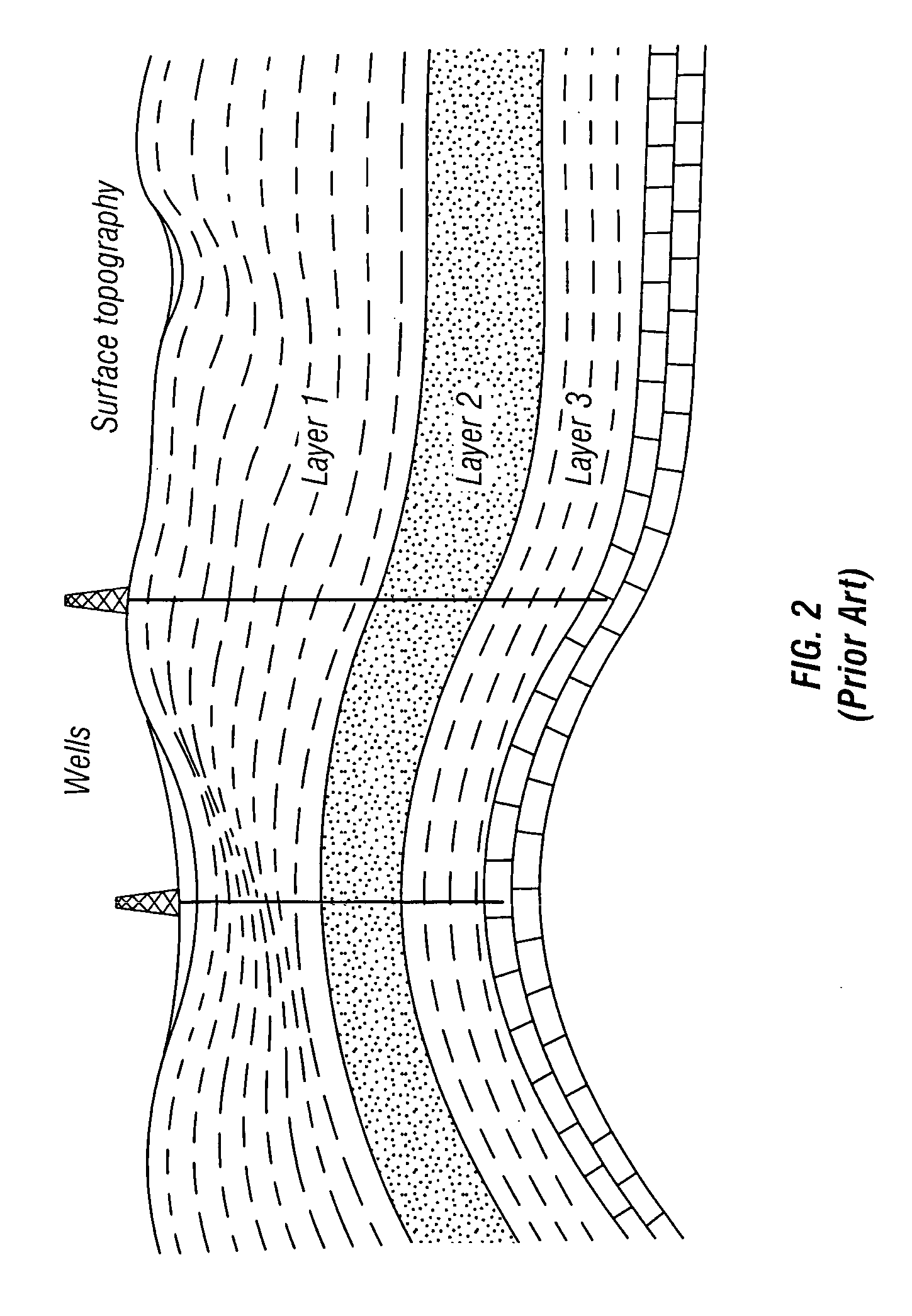Method of estimating geological formation depths by converting interpreted seismic horizons from the time domain to the depth domain
a geological formation and depth domain technology, applied in seismology for waterlogging, instruments, reradiation, etc., can solve the problems of inaccurate structural interpretation of the subsurface, difficult to achieve accurate predictions of prospective drilling locations and estimated geological formation depths, and deficient method of campbell
- Summary
- Abstract
- Description
- Claims
- Application Information
AI Technical Summary
Benefits of technology
Problems solved by technology
Method used
Image
Examples
Embodiment Construction
[0031] Referring again for a moment to prior art FIG. 2, one embodiment of the invention assumes an Earth model in which the subsurface comprises a single, albeit complex, geological layer disposed between the Earth's surface and a relevant seismic horizon. In other embodiments, the accuracy of the disclosed data conversion method is improved for successive seismic horizons by assuming that the Earth's subsurface is not a single layer, but rather a series of layers, wherein horizon data relating to the shallowest horizon is first converted from time to depth, and the resulting depth data is then factored into subsequent conversion of data for the deeper horizons.
[0032] One of the techniques employed in the method of horizon depth conversion disclosed herein is the computation of successive interval velocities for each geological layer. As referred to in the instant disclosure, therefore, the term “geological layers” refers to layers of the Earth's subsurface that are disposed betwe...
PUM
 Login to View More
Login to View More Abstract
Description
Claims
Application Information
 Login to View More
Login to View More - R&D
- Intellectual Property
- Life Sciences
- Materials
- Tech Scout
- Unparalleled Data Quality
- Higher Quality Content
- 60% Fewer Hallucinations
Browse by: Latest US Patents, China's latest patents, Technical Efficacy Thesaurus, Application Domain, Technology Topic, Popular Technical Reports.
© 2025 PatSnap. All rights reserved.Legal|Privacy policy|Modern Slavery Act Transparency Statement|Sitemap|About US| Contact US: help@patsnap.com



